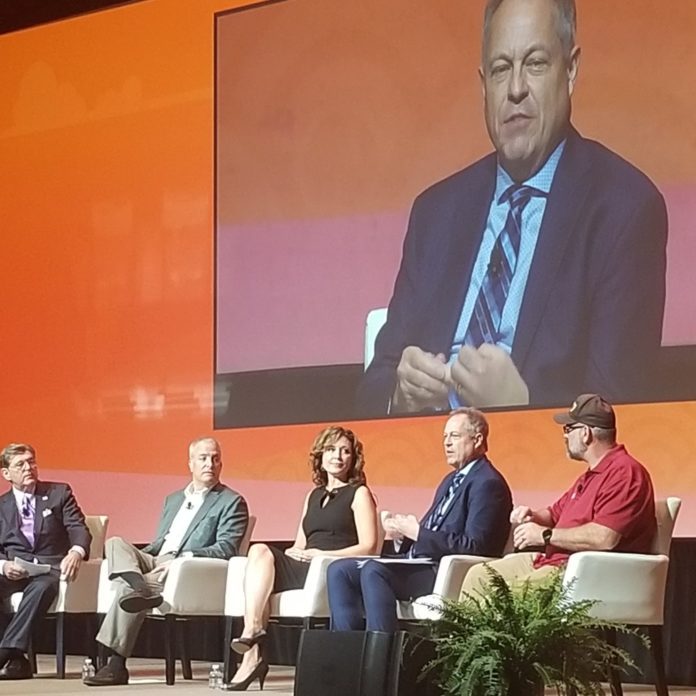Providing mobile and broadband services in rural America “is not cookie cutter”
PHOENIX–In 20 months unlike any others that the telecom industry has dealt with in modern times, small carriers have had to navigate the uncharted waters of a pandemic on a fraction of the budget of national carriers: Shifting to online sales and service channels when perhaps they hadn’t offered it before; making curbside service an abrupt reality; extending service as quickly as possible to get students and households connected for remote learning; committing to the Federal Communications Commission’s pledge not to cut customers off even if they couldn’t pay their bills; figuring out how to introduce self-installation and minimizing service calls to keep their workers and customers safe.
On Tuesday in Phoenix, representatives from four carriers had a chance to reflect on what they accomplished, how they did it––and the challenges still ahead––during an in-person panel discussion at the Competitive Carriers Association’s annual convention.
Mark Nazé, CEO of regional service provider Nsight – Cellcom, recalled how he had watched the number of unpaid customer bills bloom as part of the FCC pledge––and then shrink, until ultimately the company only had to write off a small amount, so that the program and commitment were ultimately “win all the way around.” Eric Woody, chief technical and operations officer for Union Wireless, described how his company focused quickly on partnering with school districts in its service area to rapidly deploy Wi-Fi to parking lots, so that people without home internet could pull up in their cars and access the internet for free.
Amid the pandemic, network upgrades and projects continued. Alaskan carrier GCI launched 5G in Anchorage during the course of the pandemic: The northernmost 5G network in the U.S., noted Maureen Moore, chief customer experience officer at GCI. Anchorage accounts for about half of Alaska’s population, and GCI’s 5G launch has resulted in customer growth, Moore said.
“I highly encourage other carriers to look at being first in your market to get to 5G, if you can figure out how to do it, because you will definitely see the benefits from a customer growth point of view,” More said.
She added that GCI is now evaluating where to extend its 5G network next and looking at moving north into the Mat-Su Valley, another of Alaska’s more populous areas. Moore also spoke about one of GCI’s two major fiber sub-sea cable projects––a reminder that even for small carriers, infrastructure projects can be massive. GCI is working on running a fiber cable down the Aleutian Islands, which Moore said is roughly the equivalent of connecting Kansas with California.
As additional money from pandemic relief packages and Washington, D.C. continues to hash out an infrastructure program in which broadband expansion has bipartisan support, regional operators also expressed their continued frustration with the difficulty of competing for spectrum. Large geographic licenses often don’t align with their service area or current spectrum holdings, or they include a metropolitan area that the national carriers want to serve, which is likely to put prices out of reach. Jonathan Foxman, president and CEO of wireless provider Cellular One, also discussed his concerns about the nature of broadband momentum in federal policy and how it “funnels everything toward fiber” when wireless offers a way to reach people at a lower cost and a faster timeline.
If one thing was clear, it’s that, as Woody of Union Wireless put it, that providing mobile and broadband services in rural America “is not cookie cutter. It’s not one size fits all. It’s not even one size fits most.”
And size matters, especially when it comes to scale for network equipment, support systems and spectrum. “Our rural customers need the services that the urban customers get, but we don’t have the scale and sometimes the cost of these things just doesn’t scale,” said Nazé, of Nsight – Cellcom. “If I could change something, it would be the way we could afford these things in a scale that makes sense for us.”

